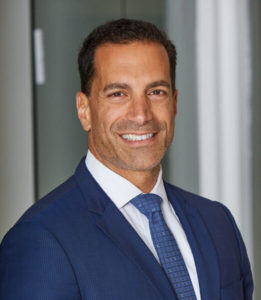What Does a Computational Scientist Do?
A computational scientist is a person who specializes in scientific computing. They are usually a scientist, applied mathematician, or engineer. In addition, they may also be an applied statistician. A computational scientist typically has experience in the fields of applied mathematics, statistics, and engineering. A computational scientist has a variety of skills, and these skills can be used to solve a variety of scientific problems.
Skills required to be a computational scientist
A computational scientist must be well versed in the fundamentals of programming and data analysis, and be able to apply these skills to a variety of projects. They also must have strong problem-solving skills in order to find solutions to complex technical challenges. A computational scientist must also be good at communicating with team members and stakeholders.
Computer scientists must be skilled in math and engineering principles, and must be able to communicate their findings to non-technical audiences. They must also be well-versed in the leading programming languages. A computational scientist must be able to work independently and as part of a team. The job requires analytical and creative problem-solving skills.
A computational scientist must be creative and have excellent communication skills. He or she should be able to explain their work to others and provide them with the information they need to be successful. In addition, he or she must be able to develop complex algorithms. This type of job can be challenging, and it is important to understand how to deal with different personalities.
As a computational scientist, you will use your analytical skills to build algorithms to solve complex problems. Typically, you’ll spend your time in an office environment, working long hours to meet deadlines. Computational scientists often work on their own, but will sometimes collaborate with customers or clients.
A computational scientist will work with a team to create computer-based models for complex systems and problems. A computational scientist will work closely with technical personnel and have good communication skills. During the training process, you’ll have the chance to explore specialized fields, such as artificial intelligence (AI) or machine learning.
Computer scientists use academic knowledge and practical expertise to build efficient technology. Most of them are involved in developing computer hardware and software applications. They also conduct theoretical research in many different fields. For example, computational complexity theory, artificial intelligence, and data systems. In addition, computer scientists are also active in discovering technological breakthroughs.
Computer scientists often focus on software development and programming, although positions in the government and business sectors may also require graduate degrees. While computer scientists are regarded as being a highly competitive career, they are in demand and can expect to earn a high salary.
Research collaborations
Whether you’re interested in climate change or water quality, you can benefit from collaborations between computer scientists and ecologists. This type of research often uses state-of-the-art models and methods developed by computer scientists and applies them to other disciplines. The benefits of these collaborations go beyond the technology that is involved, as the collaborations often lead to broader research and development efforts.
Collaborations between computational scientists and other disciplines are encouraged through NIH R&D Grants. Collaborations increase the creativity and productivity of researchers and allow them to tackle major challenges. In order to receive funding, however, researchers must demonstrate that they have a solid understanding of several scholarly fields, including the one in which they’ll collaborate. One example of this collaboration would involve a computer scientist working with a neurobiologist, while the other collaboration might involve an evolutionary biologist or a geneticist.
The Computational Science Division combines computer science and applied mathematics with domain expertise to solve the most complex scientific problems. The division has developed a broad simulation application platform for scientists and provides a collaborative environment. The scientists in the Computational Science Division often collaborate with colleagues in the Mathematics and Computer Science Division, the Data Science and Learning Division, and the Argonne Leadership Computing Facility.
Identifying shared goals between interdisciplinary collaborators is essential for successful collaboration. To accomplish this, problem concept mapping is a valuable tool. Problem concept mapping requires team members to define the research problem and its contributing factors. Developing these maps together can help improve shared understanding between different disciplines. The process can also help establish shared understanding of research goals.
Computational scientists are increasingly seeking ways to collaborate with other researchers. However, collaborations can be difficult without tools and resources. Moreover, collaborations between scientists must include effective ways of communication, data storage, and data preservation. This means that the SDCC will focus on developing collaborative tools that can help scientists work more efficiently and successfully in their research.
As a result, the Computational Scientists’ Center encourages interdisciplinary research collaborations and data sharing. This approach improves the ability of scientists to translate their findings into new scientific discoveries. In addition, it also promotes the development of generalizable approaches and tools. In short, it broadens the scope of collaboration in computational neuroscience.
Leadership
As a Computational Scientist, you will play an integral role in the researcher-facing support team for the Applied Research Institute, Purdue’s national defense and aerospace initiatives. You will be responsible for project management of large-scale research computing systems, engaging in collaborative partnerships and solving complex computational problems. In addition, you will work with researchers to develop proposal opportunities.
As a Computational Scientist, Chris has a background in soft condensed matter, and he works with researchers at the Institute to make the most of their leadership computing resources. He helps them by providing training on code parallelization, I/O and load-balancing, as well as workflow design and data management. Chris is also responsible for educating researchers on key topics related to high-performance computing. In addition, he works closely with scientists to help them achieve their scientific goals.
Computational scientists are pioneering new ways to improve the quality of leadership. Through simulations, network analysis, AI, and other computational approaches, they can help leaders make better decisions. This innovative approach can be used to reduce the pain points of today’s leaders and improve organizational performance. It can also strengthen interpersonal relationships and boost morale in an era of remote work and fragile supply chains.
In order to help the community in developing computational science expertise, the Argonne Leadership Computing Facility provides supercomputing resources and training opportunities. The ALCF also cultivates a diverse HPC workforce. The ALCF provides services and expertise to the research community, which enables breakthroughs in many disciplines.
Computational scientists typically work in offices, but they also spend a lot of time working in computer laboratories. They often work on a project in teams to develop a solution. They have to work effectively with their team members and communicate their findings to others. They are required to stay current on trends and apply them to their work. This is essential in today’s society. They need to be capable of handling large amounts of data and communicating their findings to the rest of the team.
Opportunities for external community engagement
Opportunities for external community engagement for computational scientists can come from a variety of different sources. For example, academic researchers often recruit members of the groups that they study to contribute to the process of analyzing data. This can be a particularly powerful community engagement opportunity. In addition, researchers can create collaborative projects where community members can contribute to the conception of the project, the metrics to be measured, and the data collection and analysis.
Regardless of the size of your community engagement effort, it’s essential to develop an evaluation plan. This will help you avoid wasting time or money, identify the most effective strategies, and provide a roadmap to success. It will also help you stay organized and keep your stakeholders informed about the progress of your community engagement efforts.
Another challenge in community engagement is managing conflict. While not all conflicts are bad, some can be harmful and can be detrimental to the process of community engagement. However, many times, constructive conflict can contribute to better long-term outcomes. In these cases, it’s important to foster trust and build relationships with people involved. Some common sources of conflict include faulty communication, competition for resources, and value clashes.
A successful community engagement effort will identify stakeholders. These stakeholders are not just potential funders or official decision-makers; they are individuals and groups affected by the project or issue. The key to successful community engagement is to consider the perspectives, values, and histories of the stakeholders involved. This way, a successful engagement process will include the diverse voices and interests of everyone in the community.
An effective community engagement process will include a process for evaluation and identifying success criteria. This process will help ensure that the processes are aligned and that the communication is consistent with the goals of the engagement. It will also help identify any tensions between internal and external forces that can lead to a failed engagement.



